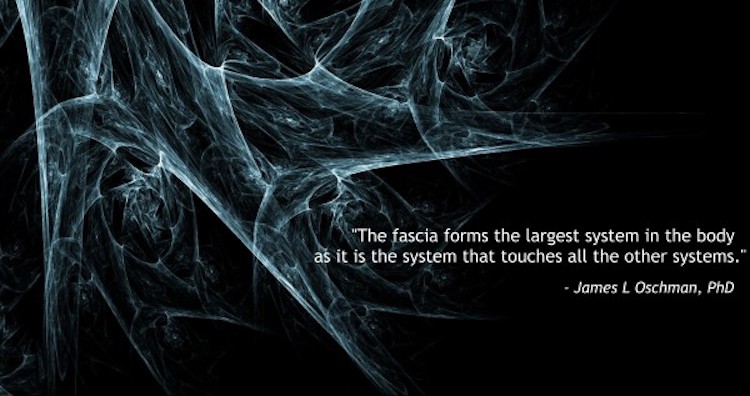Myofascial Release Technique

Massage is a therapy enjoyed by many of our clients. Massage therapy works with the body’s muscles, assisting them to remove toxins and encouraging them to relax and release tension. Although this can be very beneficial in some clients, the connective tissues surrounding the muscles may not completely release. Consequently old tensions may return repeating a vicious cycle of tension and discomfort. Receiving a massage that focuses on myofascial release, works with the body’s connective tissue with the aim to encourage a deeper muscular relaxation and a reduction in tension contributed by the restrictions. To understand the technique of myofascial release, it is useful to understand what fascia is and how it works.
Fascia is a connective tissue that runs throughout the body from head to the toe. It is like a web of tissue that can be found around your organs, muscles, blood vessels and glands. Fascia is a three dimensional dynamic structure, that can move and stretch without restriction. However, harmful posture, trauma, stress and inflammation can lead to restrictions in the fascia. As the fascia tightens it then sticks and clumps together. The restriction places undesirable pressure on the structures connected to the fascia, such as nerves, muscles, blood vessels and bones. In turn, becoming restricted resulting in chronic myofascial pain.
Picture or imagine that you are wearing an all-in-one bodysuit allowing the body to fully stretch and move. This is how healthy fascia behaves. Now imagine that parts of the bodysuit have shifted and changed. Some areas lost its stretch becoming tight and immobile. Others gathered into a tight ball and some areas become rough and coarse. In these situations, blood flow becomes restricted and therefore joints become strained. The body can experience symptoms such as aching pains, muscles fatigue and tension. This is how the restricted fascia can feel and it can be exhausting.
Releasing the tight fascia allows the body to become more mobile and comforting. Myofascial release massage is performed without oils to allow the therapist to feel the fascial tissue and to create an internal climate for change. The therapist will apply gentle sustained pressure and stretching to allow the restricted fascia to release and circulation to improve. The treatment is relaxing and gentle without force to the tissues. The results can vary, but for the majority of clients the pain release is immediate and movement can be restored to a level similar to that previous of the restrictions. It may take a number of treatments for some clients, but progress is usually seen after three or four sessions.

